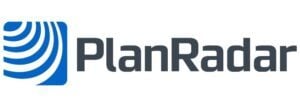With the impending Fire Safety Act due to come into effect in 2022 or 2023, building owners and asset managers are already increasing their fire safety protocols in advance of the new legislation. Additional responsibilities and compliance mean weaving the ‘Golden Thread‘ into all fire safety areas will become essential.
In this webinar, now available on demand below, Rob Norton, UK Senior Account Manager, Fire, Health & Safety at PlanRadar, and David Smith, Export Manager, Secretary to FIRESA Council and BSIP Project Leader at FIA, discuss real world cases on how digital tools support fire safety and develop the essential golden thread.
Background to the webinar
Since news broke that dangerous cladding was largely responsible for the severity and lethality of the fire at Grenfell Tower in 2017, the realisation that many other buildings have similarly dangerous cladding brought with it an immense amount of fear for building owners and tenants alike.
EWS-1 forms were quickly introduced following Dame Judith Hackitt’s report, mandating accurate and up to date digital records of all information for a building from design through to occupation. The forms produce clear and consistent documentation on cladding and assessments to be carried out by competent persons. Initially, there was no central location for EWS-1 forms to be uploaded and retrieved, prompting the FIA to create the Building Safety Information Portal.
In the first half of this webinar, David Smith, Export Manager at FIA, discusses the benefits of utilising the portal, discussing the challenges currently being met to achieve its full potential, and the invaluable nature of the resource for EWS-1 form submission and retrieval.
Rob Norton, UK Senior Account Manager at PlanRadar then goes on to talk viewers through further benefits of digitalising data, highlighting its ability to eradicate challenges related to relying on paper forms, for example, fragmented, incomplete, and often inaccessible project data, a lack of clarity and a harder to manage building.
Rob then goes on to demonstrate the use of PlanRadar’s mobile platform for completing EWS-1 forms, proving just how much time can be saved simply by moving to a digital approach.
When watching this webinar you will:
- Gain an insight into how we can navigate changes of the new fire safety regime.
- Explore how the ‘Golden Thread’ can keep all project members up to date with all safety measures on site
- Learn about the benefits and challenges of the implementation of digital record-keeping
- Discover how we can handle increased fire risk assessments and other reporting obligations.
Sponsored by



